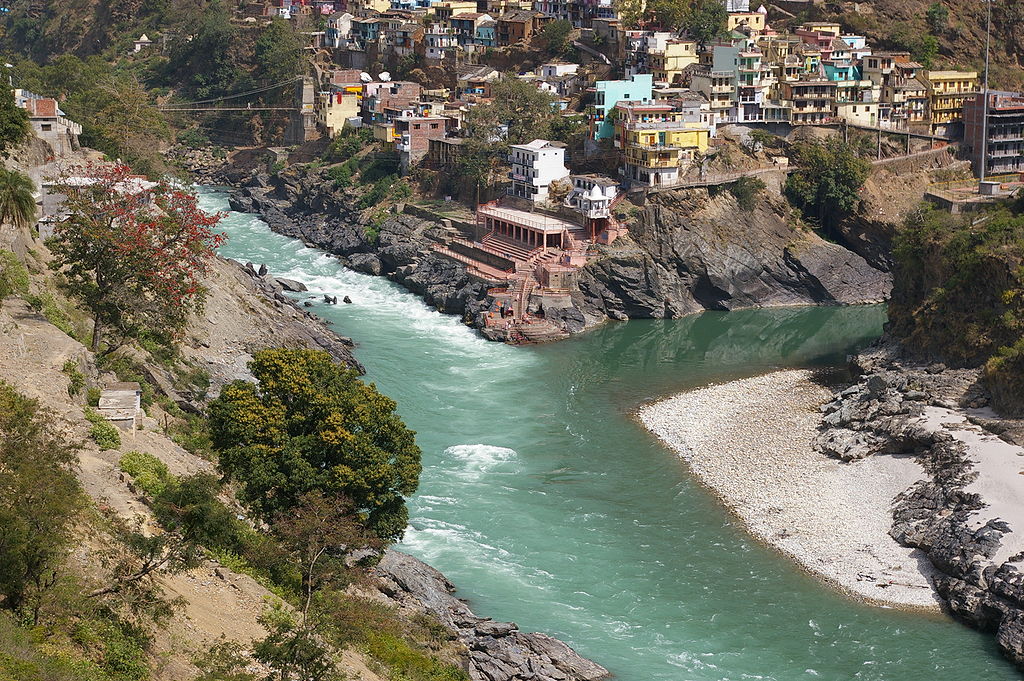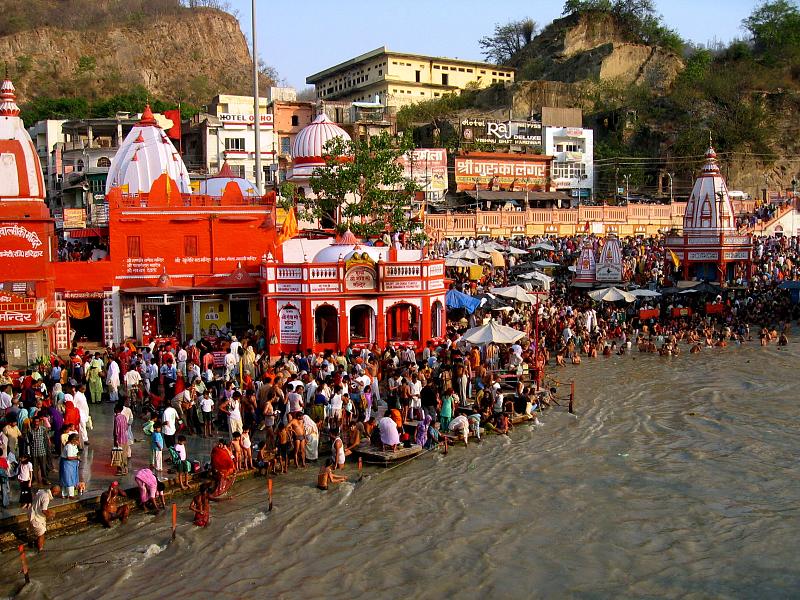Interesting Facts on Ganga
Ganga River

Interesting Facts on Ganga
River Ganga holds great importance in the economic, social and cultural life of the Indian people in general and Hindus in particular. Here are some interesting facts on the most sacred River of India, Ganga.
- River Ganga is about 1557 miles long (2506 km).
- The Ganges basin is about 200 to 400 miles (322 to 644 km) wide.
- The river Ganga originates at Gangotri glacier on the southern slopes of the Himalayas, some 14, 000 feet above sea level.
- River Bhagirathi and Alaknanda join each other at Devprayag to form River Ganga.
- Major pilgrimage places on River Ganga are- Rishikesh, Haridwar, Varanasi and Prayag (Allahabad).
- The mouth of River Ganga forms a vast delta, the Sundarban delta (the largest delta in the world).
- There are two major dams on the Ganga. One at Haridwar and the other dam is a part of the hydroelectric project at Farakka.
Legends of Ganga
River Ganga holds an exalted and sacred position in the Hindu religion. The important place of River Ganges can be gauged by the fact that many ancient India texts refer to the river at different places. River Ganges is repeatedly invoked in the Vedas, the Puranas, the Ramayana and the Mahabharata. In Hindu mythology, River Ganga is associated with many legends and myths. According to legends, River Ganga is considered as one of the two daughters of Meru (the Himalayas), the other being Uma, consort of Shiva.
Devprayag - Confluence of Bhagirathi and Alaknanda

Course of River Ganga
River Ganga is one of the largest rivers of the Indian sub continent. It originates in the Gangotri glacier and traverses through the great Indian plains of North India. Right from its origin to its confluence with the ocean, river Ganges flows through many ancient pilgrimage towns and cities of India. Some of the important pilgrimage centers on River Ganga are Rishikesh, Haridwar, Prayag and Varanasi.
Rishikesh
Rishikesh is the Gateway to the Himalayas. It is at Rishkesh that one experiences the might and purity of the Ganges River. Situated in the serene atmosphere of the Himalayas, Rishikesh has been an important Hindu pilgrimage center for centuries. Many ancient as well as modern temples are located on the banks of River Ganga, at Rishikesh. Besides the temples, the most important attraction at Rishikesh is the Lakshman Jhoola (a bridge) across the Ganges.
Haridwar
In Hindu religion, Haridwar is famous as the Gateway to God. The River Ganges enters the North Indian plains at Haridwar. Haridwar forms an important destination for the Hindu pilgrims from all over the world. Kumbha Mela, one of the most sacred events for Hindus, is held at Haridwar, Prayag, Nashik and Ujjain. The Kumbha Mela occurs four times every twelve years, once at each of the four locations. Millions of devotees gather at Haridwar on the occasion of Kumbha Mela and other important Hindu festivals. Har ki pairi, where the entire riverside is lit up with the glow of hundreds of lamps, in the evening, is the most important pilgrimage spot in Haridwar.
Prayag (Allahabad)
Prayag is another important pilgrimage center for Hindus. It is one of the four pilgrim places, where the "Kumbha Mela" is held. The place where river Ganga merges with River Yamuna is called "Sangam". Prayag is an ancient pilgrimage site and attracts thousands of Hindu pilgrims every year from all over the world.
Varanasi
Varanasi, also known by the name of Kashi or Benaras, is the most venerated of the Hindu pilgrimage sites in India. Varanasi, known as the cultural capital of India, is located on the banks of the holy Ganges River.
Ganga Dashara, at Haridwar

The Route
A rough idea of the route it takes. Here is a list of the main places the India Ganges River runs through (in order).
Step 1: Uttarakhand (state + Start)
Step 2: Kanpur, Soron, Kannauj, Allahabad, Varanasi, Patna, Ghazipur, Bhagalpur
Step 3: Through the Rajmahal Hills
Step 4: Mirzapur, Ballia, Buxar, Saidpur and Chunar
Step 5: The Bay of Bengal (Sea + End)
Rivers that make up the Ganges:
Alaknanda river, Dhauliganga river, Nandakini river, Nandprayag, Pindar river, Karnaprayag, Mandakini river, Rudraprayag river and Bhagirathi river.
Rivers that join the Ganges:
Yamuna Kosi, Son, GandakiGhaghra, Padma River Jamuna River, Meghna River, Meghna's
The India Ganges Dolphin:
Dolphins still somehow survives in the murky waters of the Ganges river although still greatly under threat from extinction.